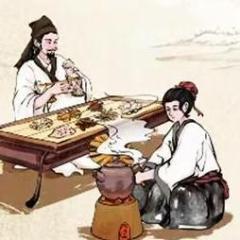
Nancy in Pátzcuaro
participating member-
Posts
604 -
Joined
-
Last visited
Recent Profile Visitors
8,258 profile views
-
We had a similar refrigerator incident. It resulted in a quick trip to a hardware store to buy (and then install) a door latch. You could also call it a slide latch. We were traveling with a cake I'd made for a friend's birthday--Marcella Hazan's wonderful pear cake--and went around a sharp left turn a little too fast (my husband was driving) The refrigerator popped open and the cake, in a pyrex dish, shot out of the refrigerator and ended up in the door stairwell. A selection of other items from the fridge ended up on top of it. After pulling over and catching our breath, we found that the cake dish did not break, none of the miscellaneous fridge items had damaged it (or been damaged themselves), and that we could resume our trip with only mildly elevated heart rates. Needless to say, we drove more carefully. And the door latch is one item on our departure checklist. My husband is a pilot but no longer flies, but he routinely used a check list before flying. It's invaluable, IMO. The consequences of missing an item on the checklist aren't as dire as it would be when flying, but it has saved us a time or two.
-
Making the best use of the space you have can sometimes be a real dilemma. I have a drop leaf in my (teeny little) kitchen next to the sink, but the most important addition we did when we first bought the Pleasure-Way van was to put a plastic cutting board over the cooktop. We have a 2-burner cooktop, and my spouse found a cutting board that fit exactly (what are the odds of that?) and put little square blocks underneath to raise it over the actual burner. We remove it, obviously, when it's time to cook. It has greatly improved my ability to keep my temper while preparing a meal. The pull-out pantry has a finished top that I can use in a pinch. However, cooking in such a confined space requires me to "sequence" the process. What order should I use to be the most efficient? So I have to think on it for a bit before I start. Any cutting-up of vegetables or meat, preparing any starch (rice, potatoes) and starting to cook (which occupies one of my 2 burners), where to put dirty pots and prep utensils when they're not needed (the floor) should of course be done first. With luck everything gets done at the right time, and then I turn over the dishwashing tasks to my spouse. (I have to say I covet your oven, that extra space, and most of all your refrigerator.)
-
A curious fact--the young university students (mostly men) who dress in medieval costumes (tights, doublets, etc.) wander around Guanajuato at night, playing music on instruments that Shakespeare would have recognized, asking for tips and flirting shamelessly--are also called "tunas." Don't ask me why.
-
One of my favorite things is to hear the rain on the roof of our little van. Such a cozy-feeling sound. All I can think is, "Thank goodness I'm not in a tent!" However, rolling up the awning when wet is no fun. Once it took us several days before we got to someplace warm and could unroll it.
-
Yesterday I decided it was time to tackle one of the sausages I'd bought last summer in Luck, Wisconsin. I showed it to you before: it's one long coil, and when I realized that I hadn't taken time to thaw, much less cut it, I put it back in the freezer a couple of weeks ago. That looks very much like some of the sausages we bought at Barnesville Grocery in Barnesville MN a couple of years ago. The grocery makes all the sausages, and they were definitely worth eating. Some sausages were standard long tubes but others were coiled like yours. All were sold frozen, of course--it's a small town and a small store, and I'm betting they made large batches of all their sausages that then had to be frozen. One interesting one was a potato sausage, which we gave to friends. Don't recall if they had some comments about it. (I think we gave that one to them because we were pretty much out of freezer space. It's a little fridge after all, and we try to reserve space for important things like ice cream.)
-
Very hard cheese, long-forgotten in the fridge: What to do with it?
Nancy in Pátzcuaro replied to a topic in Cooking
Well, it was too much to just throw away, and I didn't have any other parmesan in the fridge, which meant I had to change my plans. So I guess when we go to Morelia, aka the big city, I'll have to resupply. -
Very hard cheese, long-forgotten in the fridge: What to do with it?
Nancy in Pátzcuaro replied to a topic in Cooking
Thanks--I'll try that. I did think about warming it but was afraid it would begin to melt. Probably unlikely given how hard this chunk of cheese is. -
Very hard cheese, long-forgotten in the fridge: What to do with it?
Nancy in Pátzcuaro replied to a topic in Cooking
I have discovered, waaay back in my fridge, a block of parmesan. And when I say "a block" I mean something akin to building materials. It's a fairly sizable chunk--over 7 oz.--and I'd like to somehow rehabilitate it. Hand grating is out of the question if you want to keep the skin on your fingers. Does anyone have any wisdom about how to soften it enough to grate? I think it's too small too use as a doorstop. Bonus points if you get the joke title. Thanks for your help. Host's note: the sentence above refers to the original title of this post, which was "Hard Cheese", before it was merged with an earlier topic on the same subject. -
Do you have a photo of your new rig?
-
I did a little poking around on the internet, using iOverlander and, surprisingly, the Winnebago website, https://www.winnebago.com/lifestyle/winnebagolife/travel/hidden-gems-free-county-city-rv-parks though it seems to be more Texas oriented. My spouse says we used iOverlander the most. A favorite was Burwell City Park in Nebraska, on our way back to Colorado. A few small sites right on the river (the dog, who's a swimming fool, loved it) but with larger sites adjacent to the main part of the park. No water hookup but electric at all sites. And Barnesville, MN, with the vegetable garden--dry sites in a large meadow and full hookups in a more organized area, where the big rigs were staying. We walked into town (about a mile) for supplies and found it a charming little town. Too many empty storefronts, though.
-
I'm trying to remember how we discovered them. This was a couple of years ago and my memory ain't what it used to be (along with a few other things). We stayed at several in the time we spent in Minnesota, Wisconsin and Iowa in 2023. My notes only describe the parks themselves, not how we found them. I'll ask my spouse when he gets home--maybe he remembers. if so I'll post more.
-
We had a similar experience in North Dakota. I was driving the speed limit (65mph) on US 85, heading toward Theodore Roosevelt National Park, when a right rear tire blew. We were driving a Pleasure-Way van and everything rattled violently. I was able to pull over on the modest shoulder in the absolute middle of nowhere--no buildings in sight in all directions and very little traffic. There were chunks of shredded tire for a quarter mile behind us. (We kept a piece as a souvenir.) Of course there was an (inadequate) bottle jack but I told my husband that under no circumstances was he allowed to try to change the tire. We were headed toward an RV park so we called the manager who recommended a tire shop. A nice young man named Derek came out with his rig, changed the tire, and followed us into town. Four tires later we were back on the road the following morning. Lesson learned: Tires "age out" before they wear out. Our tires had plenty of tread but were in some cases over 10 years old. Our van get taken out of storage every summer for a couple of months but the rest of the year it's in an open lot with a couple hundred other rigs. Granted the tires are covered and protected from the sun, but Colorado's a dry place and it takes a toll on tires. I'm not sure that covered storage would solve the problem. This was an expensive lesson, but at least we're assured that our tires are good for another 10 years. Not sure if we are (good for another 10 years, that is). But we'll keep using the van as long as possible because we love driving our little house around the country. One thing we discovered on this trip was the availability of city and county parks. Many of them have electric hookups and are much more reasonably priced than traditional RV parks. When all you need is an overnight with (or without) electricity, these are wonderful options. We found one that was the equivalent of a high-end RV park, and one where the host had planted a vegetable garden for everyone to use. Great tomatoes!
-
Gee, I made a lot of apple butter in a pot on the stove in my time and it didn't burn. Like any jam/jelly product, you have to stir a lot and pay attention at the end. Perhaps I was just lucky? I do like the idea of a slow cooker, though.
-
I'm with you. I've always started my polenta in cold water (or what other liquid you want to use) and proceeded from there. I don't recall where I first heard about the cold-water method, but it makes sense. Why struggle with slowly adding polenta to boiling water and stirring madly to avoid lumps. We like the results and it's a lot simpler.
-
Ooh--good one!








